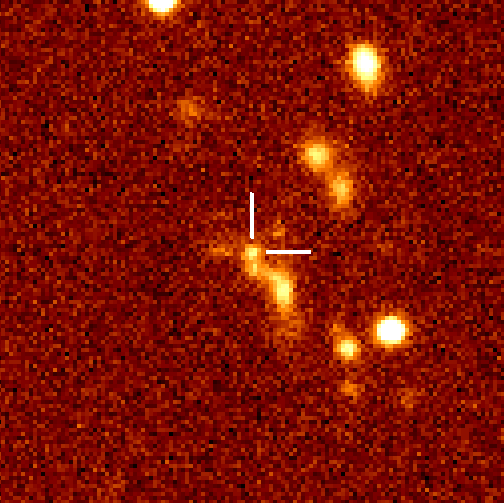GRB020405
R-band image taken with VLT-UT3 (Melipal)
2002 April 15.244: Melipal + FORS1

The field of GRB020405 imaged in the R band on 2002 April 15.244. The tick marks indicate the OT. North is at top, East is to the left; the field size is about 25 x 25 arcsec. At least four extended objects around the OT (one to the East, one to the Northwest, one below and extending to the South, and one to the Southwest) appear to form a complex behaviour for this GRB.
![[Home]](/Gif/pesce.gif) Back to Tonno
Home Page
Back to Tonno
Home Page